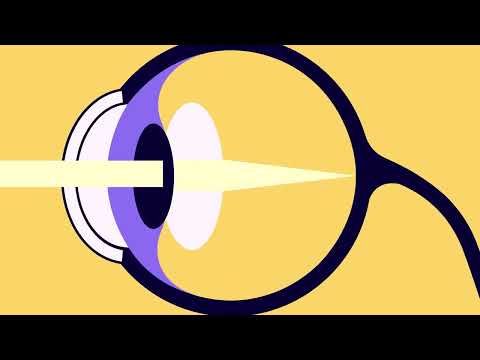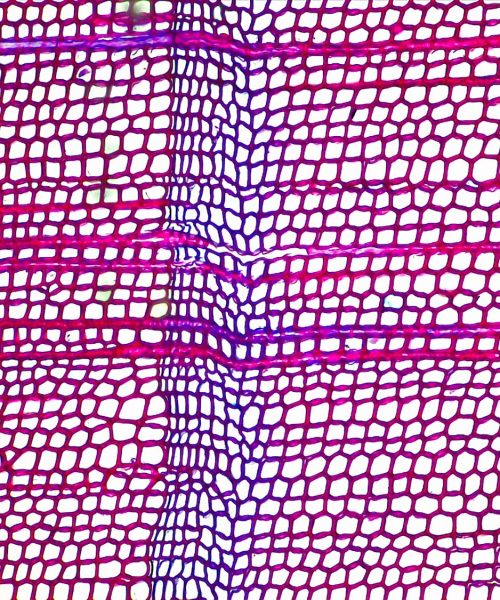In 1999, Daniel Myrick and Eduardo Sánchez shot one of the definitive horror films of the era on a budget of roughly $60,000. The Blair Witch Project is a study in omission, in the conspicuous absence of the visual effects characteristic to the genre. In lieu of baroque prosthetic gore and over-the-top CGI effects, the movie leans into silence and darkness for much of its 81-minute run time.
Watch it on a small screen and much of the magic evaporates, but watch it in a pitch-black theater, as rapt audiences all over the U.S. once did, and the effect is terrifying. It’s effective in large part because of the way our brains fill the negative space. In the absence of light, we conjure up the worst.
Offscreen, there are good reasons why so many kids (and some grown-ups) are scared of the dark: Our eyes really do play tricks on us. Turn off the lights and you’ll still see faint colors and flickers of shapes moving. In low light, you might suddenly find yourself more aware of movement at the edge of your peripheral vision. Throw in an overactive imagination and it’s easy to picture witches, monsters under the bed, or the jumpscare of your choice lurking in the gloom.
Popular Science spoke with Dr. Scott E. Brodie, a professor of clinical ophthalmology at the Columbia University Medical Center, about the science behind why we see things in the dark.
Don’t believe everything you see
It’s tempting to view the information feed that comes through our retinas as the reality of the world around us. “We ordinarily think of our vision as very faithful—what we see is what is really there,” Brodie says. But that’s not always the case. “There is neurology, there’s biochemistry in it—and [our vision] can be fooled.”
There’s an easy way to witness the limitations of our visual systems. “There are so-called optical illusions, which help illustrate that there are actual physical and chemical processes that underlie vision,” Brodie says. German vision scientist Michael Bach has a whole host of optical illusions on his website. Scroll through and you’ll see an illusory color appear out of nowhere in Benham’s Top, or chromatic afterimages dot the screen in Hinton’s Lilac Chaser.

For a DIY demonstration, close your eyes, then very gently press your index finger against the upper edge of the bony socket of one eye. Move the pressure down towards your eyeball, then move your finger from side to side. You should see a bright-rimmed black circle moving in the opposite position from where your finger is.
“That’s an example of your eye seeing something visual, something that you would interpret as a light phenomenon when there’s no light there at all,” Brodie says. “It’s just the mechanical distortion of the retina, triggering nerve cells in the retina to do things that your brain interprets as that circular pattern.”
This particular visual phenomenon of seeing light in the absence of a light source is called phosphenes. The term phosphenes is derived from the Greek words for “light” and “to show.” Phosphenes are usually a reaction to mechanical pressure or some sort of specific external stimulation. They also crop up in response to physical trauma. If you’ve ever whacked your head hard and found yourself “seeing stars, that’s what’s really going on”
Your eyes try to see in the dark—with mixed results
Even when the lights go down, your retina never really stops working. In dim lighting, your rod cells, which are highly light-sensitive photoreceptors, become more active. Because they’re clustered more toward the edges of your retina, you may find yourself more aware of your peripheral vision.
“In the dark, the retina is just as active, more or less as in the light,” Brodie says. “It’s just that more of the activity is dominated by the off cells than by the on cells. And very slight variations or quantum variations in the activation will stimulate the circuitry, even though there’s no light around.”
In short, there’s a lot going on chemically and neurologically, which means you can “see” things that aren’t really there. Maybe you even “see” things (or at least think you do) in the dark. Those seemingly random bits of color and light are really closed-eye hallucinations, also known as closed-eye visualizations (CEV).
Unlike phosphenes, you don’t need to bang your head to see these—you don’t need to do anything at all.
Not quite blackness
Contrary to what you might think, when we’re plunged into total darkness or when we close our eyes, what we see isn’t actually blackness, but rather a very specific uniform dark gray known as eigengrau. The word, which comes from the German for “intrinsic gray,” was invented by physicist Gustav Fechner, who explored the phenomenon in his Method of Limits experiment in the 1800s. In it, he tried reducing variable stimuli (light, in this case) and seeing how it impacted human perception.
Related Ask Us Anything Stories
The reason why we don’t see utter blackness is once again because of that visual noise, which come from signals from our optic nerve that our brain reads as flickers of light. Think of it as a kind of static coming from your own optical system rather than the world around you.
“The bottom line is that there’s noise in the visual system, which becomes a predominant sensation in the absence of light,” Brodie says. That’s not to say visual noise only exists in the dark; it’s just that when our retinas are taking in so much information about the world around us, we can’t really see the noise overlaid on top. Turn off everything else though, and all of a sudden it’s hard to ignore.
It’s worth noting that there are other factors beyond our visual system that may make it feel like there’s something out there in the dark. When our retinas aren’t taking in much information, our other senses kick into high gear, meaning you suddenly hear every little bump in the night.
You might also note that you feel more aware of your body itself. You can feel where your hands are even if you can’t see them exactly. That’s thanks to proprioception, which allows your brain to keep tabs on movement and spatial location throughout the body.
So the next time you’re feeling jumpy in the dark, pay close attention to your other senses, try to keep calm, and always remember that your eyes can, in fact, deceive you.
This story is part of Popular Science’s Ask Us Anything series, where we answer your most outlandish, mind-burning questions, from the ordinary to the off-the-wall. Have something you’ve always wanted to know? Ask us.






